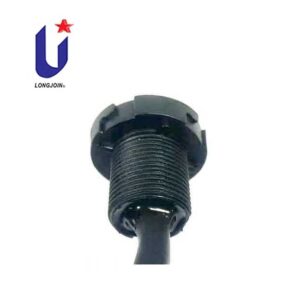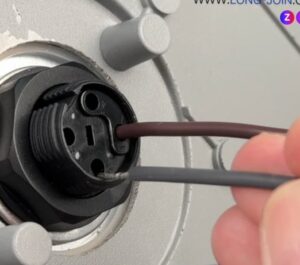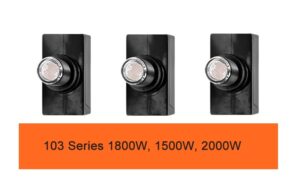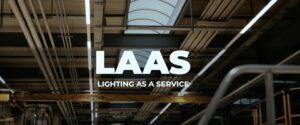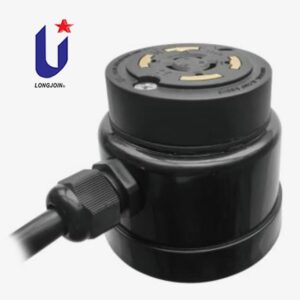ما وراء IP65: كيف يُمكن للابتكارات في مجال الخلايا الضوئية المرنة أن تحمي المدن من الكوارث المناخية
يقدم
ضرب إعصار مدمر فلوريدا في أكتوبر 2024، وأدى إلى تدمير أكثر من 70 ألف مصباح شارع. لم تكن المصابيح هي السبب دائمًا، بل كانت غالبًا وحدات التحكم بالخلايا الضوئية. ووفقًا لتقارير ما بعد الكارثة من تامبا إلكتريك، غمرت المياه المالحة وأحدثت قصرًا كهربائيًا في وحدات التحكم التي تم تصنيفها بـ IP65 فقط.
كشف هذا عن خلل كبير. غالبًا ما تُهمَل طبقة التحكم في الإضاءة، رغم أهميتها البالغة في حالات الكوارث. لا تقتصر وظيفة الخلية الضوئية على تشغيل أو إطفاء الأضواء فحسب، بل إنها تحرس المدينة بصمت. فباستشعارها لضوء النهار، تُشغّل مصابيح الشوارع عند الحاجة. والآن، تتصل حتى بشبكات المدن الذكية لمشاركة البيانات وتوفير الطاقة. تزداد وتيرة الظواهر الجوية المتطرفة. علينا إعادة النظر في كيفية بناء الخلايا الضوئية لضمان المتانة والتشغيل الموثوق.
لماذا لم يعد IP65 كافيا للتحكم في الإضاءة الخارجية؟
مع تغير أنماط المناخ، تُدفع أجهزة استشعار الخلايا الضوئية التقليدية الحاصلة على تصنيف IP65 إلى ما يتجاوز حدود تصميمها. ولكن لماذا تحديدًا يفشل تصنيف IP65، وما الذي ينبغي أن يحل محله؟
حدود IP65:
- مقاوم لنفث الماء فقط، وليس مقاومًا للغمر
- لا يوجد ضمان ضد التآكل بالمياه المالحة
- اللحامات الضعيفة والأختام الضعيفة في الرياح القاسية والفيضانات
لمقاومة الجيل القادم من العواصف، تحتاج المدن إلى وحدات تحكم بالخلايا الضوئية حاصلة على تصنيف IP68 أو أعلى. يضمن هذا التصنيف الحماية من الغمر الكامل في الماء، ومع وجود غلاف مناسب، يزيد من متانة النظام ضد الضباب الملحي والأشعة فوق البنفسجية.
تصنيف | وصف مقاومة الماء | مستوى الحماية في العالم الحقيقي |
IP65 | نفاثات الماء فقط | مناسب للمطر، ويفشل في الفيضانات |
IP67 | الغمر المؤقت (30 دقيقة على عمق متر واحد) | أكثر أمانًا في حالات العواصف |
IP68 | غمر طويل الأمد + حماية من الغبار | مثالية للأعاصير والمياه المالحة |
الترقية إلى أنظمة الخلايا الضوئية IP67 مثل Long-join JL-207-IP68، أحد النماذج الأكثر قوة المتاحة، يساعد المدن على بناء البنية التحتية للتحكم في الإضاءة المقاومة للكوارث والتي يمكنها الصمود عندما يكون الأمر أكثر أهمية.
ما هي اتجاهات التكنولوجيا الذكية التي تعيد تشكيل الخلايا الضوئية؟
يصمد مستشعر الخلايا الضوئية المرن لدينا في وجه الظروف القاسية. مصابيح الشوارع الذكية بتقنية إنترنت الأشياء لا تقتصر الآن على تشغيل الأضواء عند الغسق وإطفائها عند الفجر. المستقبل يكمن في تعدد الوظائف والاتصال. ما هي الابتكارات التي تُغير نظرتنا لتصميم الخلايا الضوئية؟
1. تسجيل الكوارث المدمج وبيانات الاسترداد
ماذا يحدث عندما ينطفئ نظام التحكم في الإضاءة؟ بدون تشخيص، يصبح مجرد ثقب أسود. هنا يكمن الخطأ المضمن ذاكرة EEPROM يأتي في مفاتيح الخلايا الضوئية.
يتيح EEPROM ما يلي:
- الاحتفاظ بالحالة أثناء انقطاع الطاقة
- تتبع آخر حالة نشطة وطوابع زمنية للخطأ
- تخزين ارتفاعات الجهد أو أعطال الإضاءة
يساعد هذا أطقم المرافق على فرز الإصلاحات بعد الكوارث ويساعد في توثيق التأمين.
ميزة | بدون EEPROM | مع EEPROM |
ذاكرة الحالة | ضاع أثناء انقطاع التيار الكهربائي | تم استردادها على الفور |
سجلات التشخيص | غير متوفر | مخزنة داخل الوحدة |
تنسيق الترميم | يدوي، متأخر | تعتمد على البيانات، ذات أولوية |
2. ردود الفعل على الشبكة: لماذا يجب على كل خلية ضوئية الرد؟
في المدن الحديثة، لا يُعدّ التقييم ترفًا، بل هو سبيل للبقاء. يجب على المدن أن تعرف أيّ الأضواء مُطفأة، ولماذا، وأين، خاصةً بعد الكوارث. لهذا السبب إنترنت الأشياء ضيق النطاق و زيجبي تشكل الوحدات النمطية الموجودة في الخلايا الضوئية تغييرًا جذريًا.
تقوم هذه الوحدات بتحويل كل مستشعر خلية ضوئية ضوئية إلى عقدة إعداد التقارير منخفضة الطاقة، تقدم:
- تنبيهات الانقطاع في الوقت الفعلي
- التتبع البيئي (الرطوبة والجهد)
- رسم خرائط الأعطال بناءً على الموقع
مع سلسلة JL-245-NB ذات الوصلات الطويلةيمكن لشركات المرافق عرض وإدارة كل مستشعر ضوء الخلية الضوئية الخارجية عن بعد، بما في ذلك الوحدات المتقدمة مثل الخلية الضوئية JL-243F، عبر شبكة المدينة بأكملها.
خيار الاتصال | فائدة | حالة الاستخدام |
إنترنت الأشياء ضيق النطاق | طويلة المدى، مستقرة في حالة الكوارث | الاتصال الريفي بعد الكوارث |
زيجبي | شبكة سريعة لمجموعات المدن | التحكم الذكي في إضاءة الشوارع الحضرية |
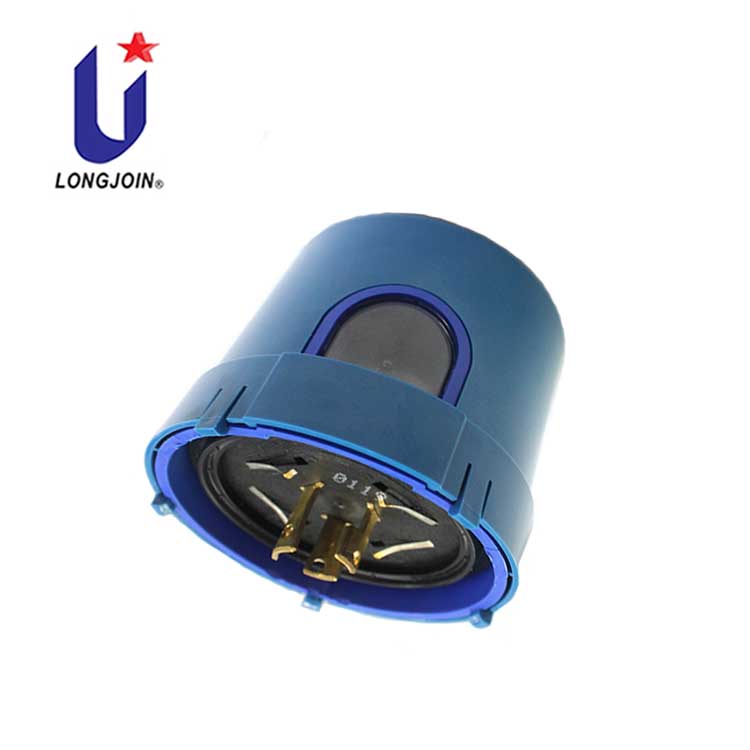
3. الإسكان المقاوم للطقس القاسي: كيف ينبغي بناء الخلايا الضوئية بشكل مختلف؟
كان مصنعو الخلايا الضوئية يركزون في السابق على ظروف الإضاءة الداخلية أو الخارجية المعتدلة. أما الآن، فيجب أن تتحمل الخلايا الضوئية المستخدمة في التحكم بإضاءة الشوارع الرياح الشديدة والتآكل والحرارة. والمفتاح؟ المواد والأختام.
المواصفات المثالية تشمل:
- PBT المستقر للأشعة فوق البنفسجيةبدلا من PC/ABS
- الامتثال لمعايير ASTM B488 لضباب الملح
- ختم مزدوج الطبقة: حشوات السيليكون + حشوات الإيبوكسي
تمنع هذه الميزات دخول المياه المالحة إلى الداخل، وتحافظ على سلامة الدوائر الكهربائية، حتى لو غمرت المياه الجهاز لفترة وجيزة أثناء الإعصار. يُعد هذا أمرًا بالغ الأهمية لدعم البنية التحتية لإضاءة الأعاصير المصممة لتدوم في ظل ضغوط المناخ.
تستخدم الخلية الضوئية JL-207-IP68 المحسنة من Long-join هذا الهيكل لتلبية أصعب متطلبات اليوم.
ما هي المجالات الرئيسية لإطار ترقية المنتج الخاص بـ Long-join؟
لتصميم نظام قادر على التعامل مع الكوارث، يتعين عليك إعادة التفكير في كل وحدة من وحدات الخلية الضوئية - وليس فقط المستشعر.
فيما يلي كيفية تعزيز خريطة طريق الابتكار الخاصة بـ Long-join لكل جزء:
عنصر | التصميم القديم (IP65 القديم) | ترقية مرنة جديدة | لماذا هذا مهم |
السكن | PC/ABS، IP65 أساسي | PBT، IP68، مقاوم وضباب الملح (ASTM B117) | ينجو من الأعاصير والأشعة فوق البنفسجية والملح |
واقي من زيادة التيار | 2 كيلو أمبير MOV فقط | 10 كيلو أمبير/20 كيلو فولت + فتيل حراري | يتعامل مع البرق والشبكات غير المستقرة |
ذاكرة | لا يوجد نسخة احتياطية للبيانات | EEPROM مع السجلات | تتبع الترميم + التشخيص |
تعليق | سلبي فقط | زيجبي / إنترنت الأشياء ضيق النطاق | تنبيهات في الوقت الحقيقي والإدارة عن بعد |
تتوافق جميع الوحدات مع اتجاهات الإضاءة العالمية، بما في ذلك ANSI C136.41 المعايير وشهادة UL/CE.
كيف يمكن للخلايا الضوئية دعم المدن الذكية وفرق الطوارئ؟
عندما تنقطع شبكات الكهرباء، تصبح إنارة الشوارع أكثر من مجرد مرافق عامة، بل تصبح شريان حياة. تستطيع الخلايا الضوئية الذكية الآن أداء أدوار في حالات الطوارئ والسلامة العامة تتجاوز مجرد الإنارة.
وظائف الطوارئ التي يمكن للخلايا الضوئية تمكينها:
- تنبيهات الكوارث
اكتشاف شذوذ الرطوبة/الجهد وإطلاق التحذيرات. - مثبتات الإضاءة الاحتياطية
تخزين آخر حالة معروفة واستعادة تشغيل الضوء تلقائيًا. - شبكة إنسايت
قم بإعداد خريطة لحالة الإضاءة في الوقت الفعلي لتوجيه أطقم العمل الميدانية بكفاءة.
تعمل هذه الوظائف على تحويل مستشعر ضوئي كهربائي قياسي إلى جهاز مرونة ذكي.
في هندسة حلول Long-join، يصبح مستشعر ضوء الشارع الضوئي عقدة حافة - جزءًا من شبكة تحكم إضاءة أوسع تساعد المدن على الرؤية والتفكير والتصرف في الوقت الفعلي.
ما هو مستقبل البنية التحتية للإضاءة الضوئية المرنة؟
لم تعد الكوارث الطبيعية عرضية، بل أصبحت واقعًا سنويًا مؤكدًا. يجب أن تتحول البنية التحتية للإضاءة، وخاصةً أجهزة التحكم في إنارة الشوارع، من كونها تفاعلية إلى كونها مُجهزة للمناخ.
في Long-join، تعتمد خريطة الطريق الخاصة بنا على ثلاثة مبادئ:
- التصلب الميكانيكي- غلاف قوي ومكونات محكمة الغلق
- تكامل التعليقات الذكية- الذاكرة والإشارة والتشخيص
- محاذاة الطوارئ- أدوات استرداد سهلة الاستخدام
باعتبارنا شركة عالمية لتصنيع الخلايا الضوئية ذات جذور عميقة في مجال البحث والتطوير، فإننا فخورون بقيادة تطور نظام التحكم في الصور للمدن الذكية.

هل أنت مستعد لبناء إضاءة شوارع غير قابلة للكسر؟
لن ينتظر الطقس القاسي. على المدن التحرك فورًا لتحديث مستشعرات الإضاءة الضوئية لديها بأجهزة مُجهزة للعواصف وطبقات بيانات ذكية.
استكشف خطوط Long-join المتوافقة مع IP68 وNB-IoT:
- JL-207-IP68 خلية ضوئية محسنة
- سلسلة الخلايا الضوئية الذكية JL-245-NB
- مقبس JL-240FXA ANSI
دعونا نبني مستقبلًا لا تنطفئ فيه الأضواء أبدًا - بغض النظر عن العاصفة.
خاتمة
الطقس المتطرف ليس خطرًا مستقبليًا، بل يُعيد صياغة توقعات البنية التحتية اليوم. بالنسبة لـ Long-join، يفتح هذا نافذة استراتيجية تمتد لخمس سنوات لتحسين متانة الأجهزة، ودمج قنوات البيانات الفورية، والتوافق مع بروتوكولات الإضاءة في حالات الطوارئ.
من خلال نهج مكون من ثلاثة ركائز أساسية - المرونة الميكانيكية، وردود فعل إنترنت الأشياء، وذكاء الشبكة - ستضمن الخلايا الضوئية طويلة المدى أنه عندما يضرب الإعصار التالي، ستبقى الأضواء مضاءة، وسيستمر تدفق البيانات.
الروابط الخارجية:
●https://www.tampaelectric.com/blog/2022/Streetlights-will-be-turned-on-24-7-Hurricane-Ian-Restoration/
●https://en.wikipedia.org/wiki/EEPROM
●https://en.wikipedia.org/wiki/Narrowband_IoT
●https://www.digi.com/solutions/by-technology/zigbee-wireless-standard
●https://ieeexplore.ieee.org/document/10670018/
●https://www.specialchem.com/plastics/guide/polybutylene-terephthalate-pbt-plastic
●https://www.astm.org/b0117-19.html


